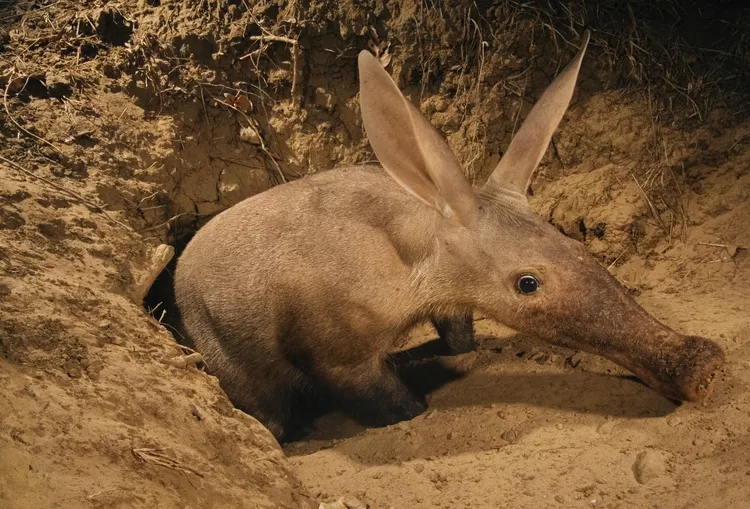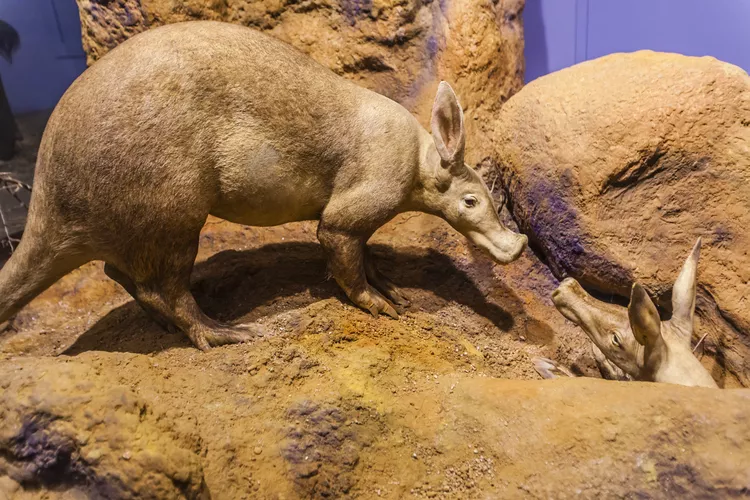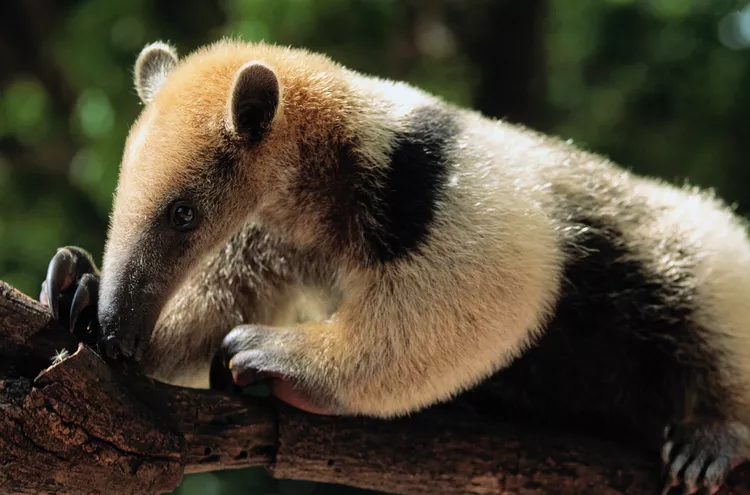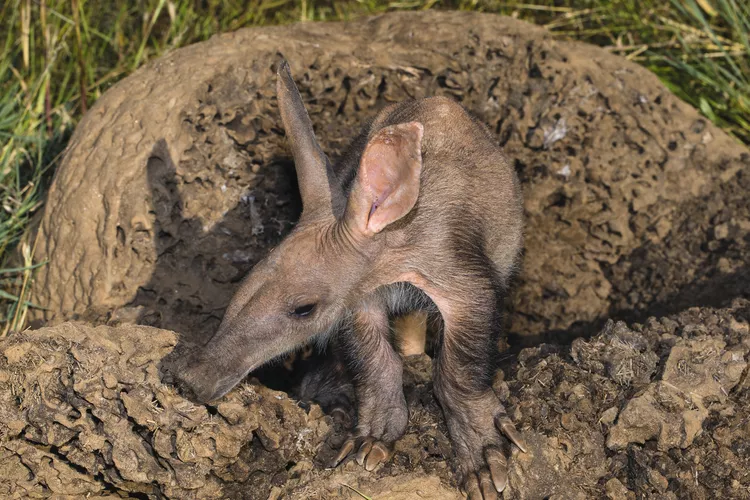Think you know aardvarks just because they’re the first animal in the dictionary? Think again. These strange, nocturnal mammals from Africa are full of surprises. From burrow-building to superhero-level sniffing skills, here are 10 incredible facts about aardvarks that will change the way you see them.

When the sun goes down, the nocturnal Aadvark leaves its burrow. Getty Images
The word “aardvark” comes from Dutch, meaning “earth pig.” Dutch settlers in South Africa gave it this name in the 1600s when they saw the animal’s burrowing behavior. Despite the pig comparison, aardvarks are actually more closely related to Elephants-Are-Endangered.html">elephants than pigs.

Skeletal remains of an aardvark that shows its back teeth.
Aardvarks belong to the order Tubulidentata, and they are the only living species in it. Their teeth are unique—made up of tiny tubes of dentin instead of traditional enamel. Even more interesting, they’re born with front teeth that fall out and never grow back!

Closeup of an aardvark.
Many imagine aardvarks as small creatures, but they can weigh as much as 180 pounds (80 kilograms)—about the same as an adult human. With their long snouts, oversized ears, and powerful digging claws, they look like nature’s very own cartoon character.

Aardvarks are master diggers, creating burrows that can be up to 40 feet long.
Aardvark burrows can be massive—stretching 30 to 40 feet (9 to 12 meters). These complex underground homes offer safety, a cool place to rest, and space for raising young. Once abandoned, their burrows are reused by other animals like warthogs, snakes, and owls.

Some aardvarks can be found in the grasslands, while others in the bushlands, savvanahs, or mountains.
Aardvarks live across a wide range of habitats, from grassy plains to savannahs and bushlands—just not in swampy or wet areas, where burrowing would be too difficult. You won’t find them in Madagascar either, as it separated from mainland Africa before aardvarks evolved.

An anteater forages for food on a log, eating up to 30,000 ants and termites a day, while an aardvark devours even more—up to 50,000.
Armed with a foot-long sticky tongue, aardvarks can eat tens of thousands of ants and termites in a single night. They even help certain plants grow—like the aardvark cucumber, which relies on being eaten and “replanted” through aardvark dung.

An aardvark investigates a termite mound for its next meal.
Aardvarks have a powerful sense of smell—possibly the best in the mammal kingdom. Their long snouts contain about 10 turbinate bones (compared to 4–5 in dogs), which support a large area of scent-detecting tissue. Their olfactory brain regions are highly developed, too.

A giant anteater forages in the grass.
Despite their similar appearance and diet, aardvarks and anteaters are not closely related. Their resemblance is a case of convergent evolution, where unrelated animals develop similar features due to similar lifestyles. Anteaters live in the Americas, while aardvarks are only found in Africa.

Some believe that the head of the Egyptian deity named Set looks like an aardvark.
Some researchers believe the Egyptian god Set, with his mysterious, animal-like head, may have been inspired by the aardvark. Though unproven, it’s a theory that adds a mythological layer to an already fascinating animal.

Comic book antihero character, Cerebus the Aardvark.
From the wilds of Africa to the pages of pop culture—Cerebus the Aardvark was the main character in a long-running comic series from 1977 to 2004. He was an anthropomorphic antihero living in a world of humans, and his story spanned 300 issues and thousands of pages.
Aardvarks may not be the flashiest animals on the planet, but they’re certainly among the most unique. From their biology to their cultural footprint, these unsung heroes of the African night deserve a little more love and recognition.
animal tags: Aardvarks
We created this article in conjunction with AI technology, then made sure it was fact-checked and edited by a Animals Top editor.